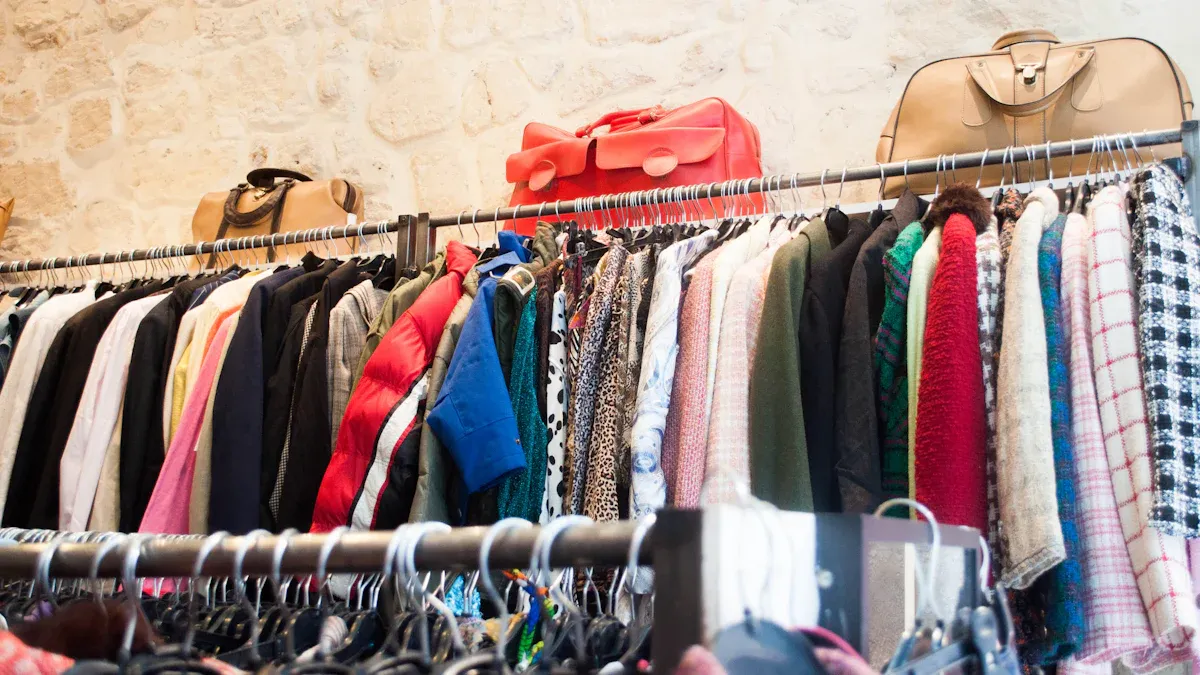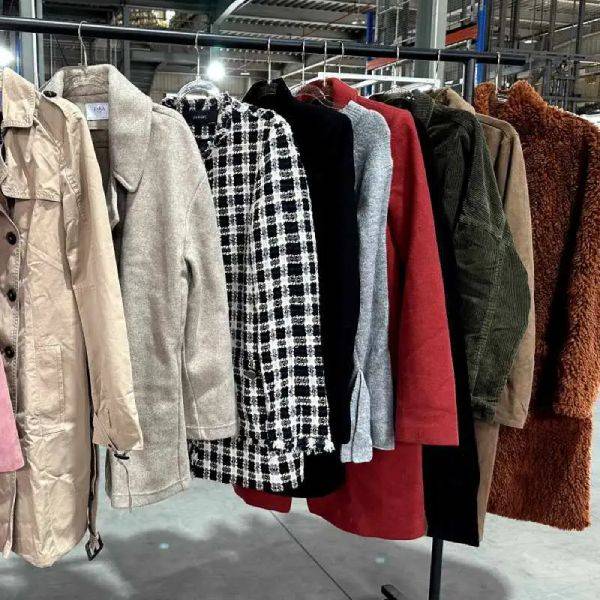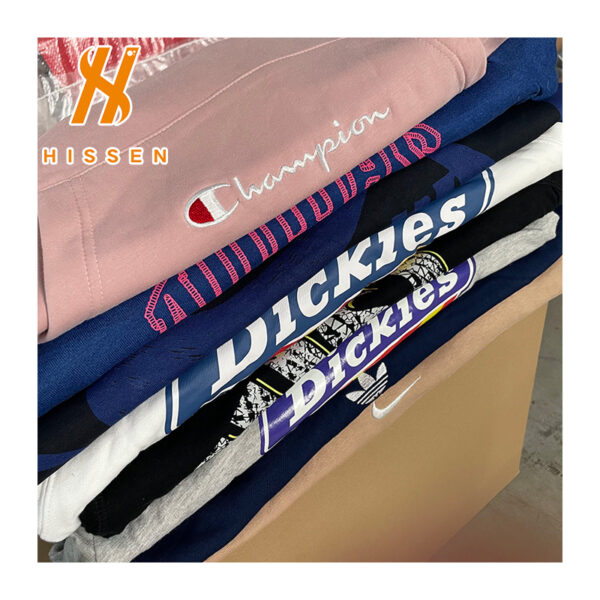The global appetite for second hand clothing is more than just a passing trend; it’s a massive, multi-billion dollar industry. For retailers, online resellers, and market traders, this business is built on a very specific unit of commerce: the bale. But for anyone new to the scene, figuring out how and where to buy bulk bales of used clothes can feel like trying to find a map to a secret world.
It’s an industry with its own language, its own supply chain, and more than a few quirks. It’s not like ordering new inventory from a factory. This is a business of logistics, trust, and managing expectations. So, how does one actually go about sourcing these second hand bale clothes?
First, Understand What You're Buying: The Types of Bales
Before you can figure out where to buy, you have to know what you’re buying. Not all second hand bale clothes are created equal. A supplier’s list might seem confusing, but the inventory generally falls into a few key categories.
- Credential Clothing Bales: This is the most “raw” product you can get. It’s unsorted, untouched clothing, exactly as it was donated to a charity or collection bin. It hasn’t been opened or picked through. The risk is high—you’ll get unusable items—but the potential for finding high-value gems (vintage, designer, new-with-tags) is also at its peak. These are often sold in large, heavy bales (700-1,000+ lbs).
- Mixed Rags Bales: This is a very common product. It typically refers to clothing that has already been picked over by thrift stores. It’s the “leftovers” that didn’t sell on the retail floor. It’s still a mix, but it has been handled.
- Sorted (Graded) Bales: This is where the real value-add happens. A supplier has already sorted the clothing by category (like “Men’s Cotton T-Shirts,” “Children’s Winter,” or “Vintage Denim”) and, crucially, by quality. These bales are smaller, often 100 lbs (or 45-55 kg), and are much more targeted to a specific reseller’s needs.

The All-Important "Grade": What Does It Mean?
This is probably the single most important concept in the whole business. Grading is the language of quality in the bulk bales of used clothes world. While the specifics can vary (a lot) between suppliers, the general system looks something like this.
| Grade | Typical Description |
| Cream / Premium | The best of the best. Near-perfect, new-with-tags, high-demand brands, or desirable vintage. Destined for boutiques. |
| Grade A / #1 | Gently used, in excellent condition. No major flaws like stains, rips, or heavy fading. This is the standard for most resale shops. |
| Grade B / #2 | Visibly used. May have small, fixable flaws—a tiny stain, a missing button, some pilling. Still wearable but not premium. |
| Grade C / #3 | Obvious flaws. Think permanent stains, small tears, or very worn-out items. Often for repair, “rework” projects, or very low-price markets. |

Where to Find Suppliers of Bulk Bales of Used Clothes
Okay, so you know what you want. Now, where do you find it? You can’t just go to a local thrift shop. This is a B2B (business-to-business) operation.
Textile Graders / Exporters
These are the big players. They are the large warehouses that have contracts with charities to buy their credential clothing. They do the sorting, the grading, and the baling. They primarily deal in massive quantities—think full 40-foot shipping containers, which can hold 45,000-55,000 lbs of clothing. The US is the world’s largest exporter of used textiles (exporting well over 1.5 billion pounds in recent years), so many of these primary sources are based there, as well as in Canada and Europe.
Wholesale Brokers
These are the middlemen. They don’t necessarily sort the clothes themselves, but they have relationships with multiple grading houses. They are helpful for connecting buyers (especially international ones) with the right suppliers and can often handle the complicated logistics and shipping paperwork.
Online Wholesale Platforms
This is a newer, and growing, part of the industry. These companies buy in container-loads and then break them down to sell smaller “micro-bales” (like 100 lbs) to smaller resellers online. The price per pound is higher, but the barrier to entry is much lower. It’s a great place to start if you don’t have the capital or warehouse space for a 40,000 lb order, but make sure that you can find a reliable used clothes wholesaler.
The Practical "How-To" of Making a Purchase
The process of buying bulk bales of used clothes is more involved than a simple click-to-buy.
- Vetting the Supplier: This is the most important step. This industry, unfortunately, does have its share of scams. Ask for references. Look for videos of their facility. A legitimate-looking website isn’t enough.
- Making Contact: Reach out with a professional inquiry. Be specific. Don’t just say, “How much for clothes?” Ask for their current stock list, their packing list (which details what’s in a typical mix), and their “MOQ” (Minimum Order Quantity).
- Placing the Order: Your first order will likely be a test. Many experienced buyers suggest starting with the smallest possible order to check for quality and consistency, even if it’s a 500 lb bale.
- Payment: For large export orders, payment is almost always done via a T/T (Telegraphic Transfer) or bank wire. Be prepared to pay a large portion (often 50%) upfront and the balance when the container is ready to ship.
- Logistics and Shipping: This is the logistical headache that many new buyers forget. If you’re buying a container, you need to understand shipping terms. Is it FOB (Free on Board), meaning you pay for the ocean freight? Or CIF (Cost, Insurance, Freight), where they arrange it? When it arrives, you have to deal with customs, import duties, and drayage (getting the container from the port to your warehouse).

A Few Realistic Expectations
Finally, it’s worth mentioning the on-the-ground reality. Buying bulk bales of used clothes is a numbers game. It is not a curated treasure hunt.
Success in this business is built on finding a reliable supplier, understanding your-end market, and having an efficient system for sorting, grading, and (importantly) dealing with the waste. It’s a lot of work, but for those who master the process, it’s the only way to get the inventory needed to scale a secondhand clothing business.



